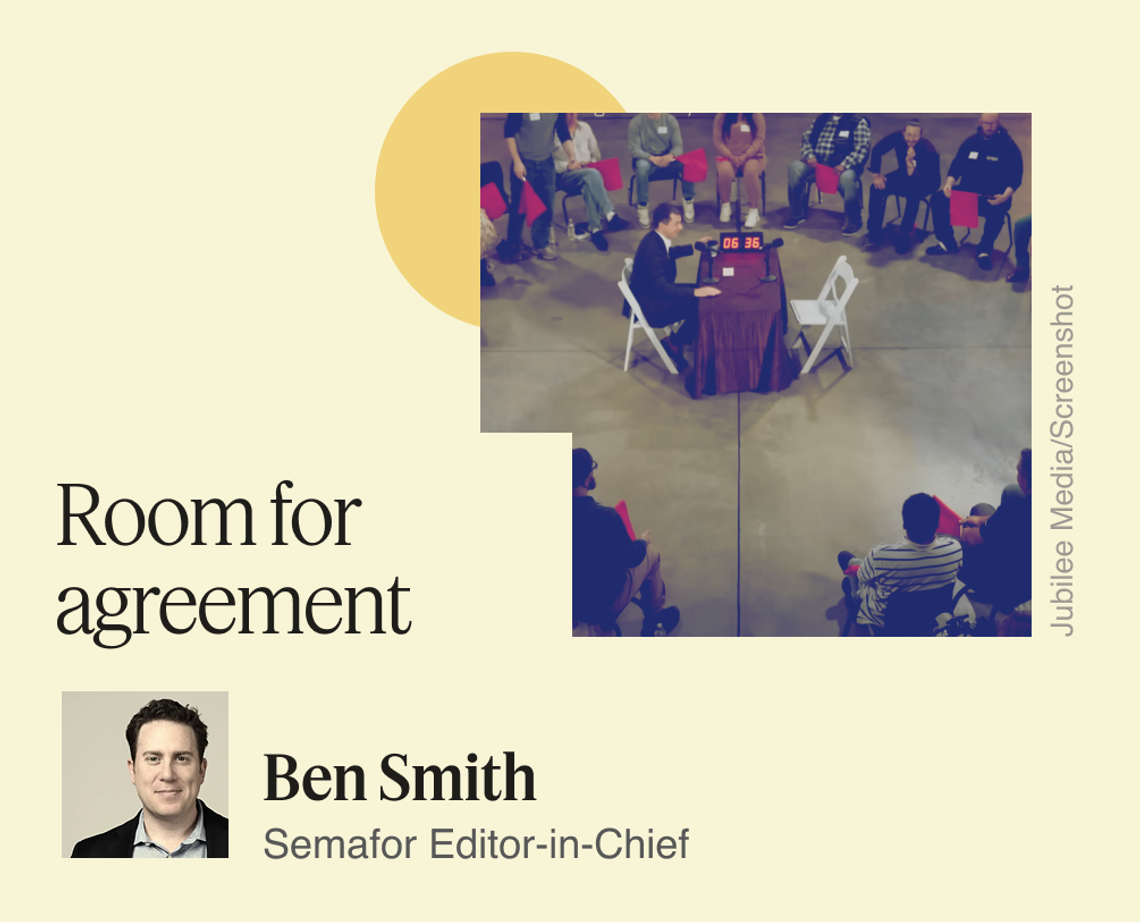 Welcome to Semafor Media, where we’re always open to disagreement. As media boundaries dissolve and old formats fade, one thing is becoming clear: Americans are thirsty for moments of comity in this hyperpartisan, hyper-confusing media age. You see it in Larry Summers and Ezra Klein arguing with David Sacks on All In, in Joe Rogan’s wide-open interviews, and in the youth video juggernaut Jubilee Media, which hosts elaborate debates over subjects ranging from the moronic (whether the Earth is flat) to the complex (Israel and Palestine). These conversations do not, as far as I can tell, change anyone’s mind. They sometimes put crackpots on even footing with experts, favoring a casual style or a British accent (or both) over expertise, and can distort well-known history (Hitler!) or science (there are no secret power plants under the pyramids of Giza). And yet, as Jubilee founder Jason Y. Lee argued on Mixed Signals this week, they also offer glimmers of empathy. They suggest a generational desperation to escape our polarized, frozen politico-media conflicts. The tendency of new media forms is to improve and professionalize, and I’m optimistic that some of this new tone can be preserved among people who more regularly know what they’re talking about. To end on a self-serving note: That’s why we have built “Room for Disagreement” into our Semafor stories, and why we hope you’ll hear robust, civil disagreement on stage at our World Economy Summit next week. Also this week: Max on Bloomberg’s wild week; our speculation on what Chuck Todd wants to buy; the curse of opinion-writing jobs; troubles with local journalism in New York; “shadow hearings” in the Capitol; and always, more AI news. (Scoop count: 8) |